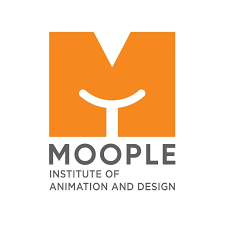Graphic design has seen several changes, whether in social, psychological, or cultural norms. There has been a rise and fall of graphics and design. Minimalist design is dominating the modern era. But the demand for maximalism has not yet vanished. But the last decade has experienced something unique. Something that goes beyond conventional norms, a theory called ‘anti-design.’
What is Anti-Design?
The emerging concept of anti-design questions conventional norms, aiming to create visual tension. It is the way of rejecting the already established rules of design and aesthetics. This makes room for innovation. It allows consumers to think about the visual displays that befall them. Anti-design plays a role by confusing those who engage and breaking rules to create new ones.
Anti-design emerged in Italy in the 1960s as a rebellion against modernist design. The recent years have seen a surge in this concept, especially through social media. The anti-design concept rejects the idea of traditionalism. This means overlooking the ideas of harmony, symmetry, and order. Instead, it holds fort in the following:
- Clashing colours
- Irregular grids
- Chaotic typography
- Overlapping elements
- Purposeful ugliness
It is common to think of this kind of framework as something unprofessional or messy. But upon more focus, you will discover how conceptual anti-designs are. It criticises societal norms. It visualises rebellion and chaos, while depicting raw creativity.
Why is Anti-Design Trending Today?
There are several reasons why anti-design concepts are tackling traditional norms. They are paving the way for a chaotic resemblance of art. It challenges the viewer’s expectations and leaves them in awe. Thus, it has become vital to sign up for a complete graphic design course and learn this in-demand skill.
1. A Rebel Against Homogeneity
Nowadays, marketing and art demand something different, one that leaves the audience spellbound. The digital platforms, tools, and branding have a similar take on things. This is where the uniqueness of anti-design steps in. It acts as a rebellion against similarity. It carves out and presents a unique identity, one that is raw, human, and charged with emotion.
2. Rise of Experimental Design
Graphic design should no longer confine itself to clean and static presentations. Designers must have the freedom to discover their true form. This freedom to experiment and explore gives rise to new forms of art. Anti-design allows this freedom. It opens doors to expressive storytelling through irregular visuals.
3. Shifts from Traditional Culture
As the world is transforming, graphic designers must keep up with the trends. They must tackle aspects like political disruptions, climate anxiety, and identity questioning. Anti-design mirrors these chaotic statements. It speaks to the modern world in a language that feels real and unfiltered.
Characteristics of Anti-Design in Action
Find out the importance of each type of anti-design in the following pointers. These, along with several other aspects, will be in the graphic design course for beginners. That is why they are trending today:
1. Typography Anarchy
Layered, distorted, and rotated fonts, placed with no definite order. Legibility does not play a role here; intriguing visual details do.
2. Disrupted Grids
Traditional alignments are not given any importance in anti-design. Elements overlap, float, or sit out of place. This creates a jarring experience.
3. Raw and Grainy Textures
Glitches, grain effects, low-fi imagery, and scans give out a handmade, unpolished aesthetic.
4. Clashing of Colours
Unexpected and clashing colours amplify emotion and discomfort. This adds to human intrigue.
5. Subversion of Expectations
Anti-design often uses humour, irony, or surprise. It aims to make the viewer think, rather than relax.
The Role of Anti-Design in Branding and Identity Design
One might wonder, how can something as chaotic as anti-design serve branding needs and meet visual identity? To answer this question, it is safe to say that branding and identity design are not limited to structure. It is not restricted to polished logos and sleek corporate aesthetics. It is all about adding personality, culture, and a voice to your backdrop.
Challenging conventional norms reflects rebellion, appearing to be bold and disruptive. Anti-design in branding does not mean a total abandonment of structure. Rather, it means injecting unpredictability, rawness, and realness where it is least expected.
Anti-Design vs. Bad Design: A Crucial Difference
There is a fine line between intentional anti-design and poor design execution. While the former is communicative, the latter is careless. An individual with a proficient career in graphic design knows the difference between the two. He knows how to break the rules with purpose. This requires understanding design fundamentals. So, breaking them becomes a choice, not a mistake. Only when one has mastered this ability can one implement the wonders of anti-designs in their pieces.
Is Anti-Design Right for Every Project?
No, anti-design is not suitable for every project assigned to a graphic designer. It is similar to minimalism and maximalism in this case. The tone of the anti-design must align with the audience. It must meet the aesthetics of the message that is being delivered, along with the strategic goals.
Anti-design is the right choice for the following:
- Creative portfolios
- Indie publications
- Gen Z fashion and lifestyle brands
- Protest visuals or political art
- Underground music or art events
Anti-design is not ideal for:
- Medical services
- Legal firms
- Government platforms
- B2B technical products
Designers must correspond their requirements with discretion. They must have clear knowledge about when to use anti-design as a tool and when to stick to conventional clarity.
Anti-Design vs. Minimalism: A Study in Contrasts
Modern design places minimalism and anti-design on opposite ends of the spectrum. The aesthetic goals of minimalistic art are clarity, order, and simplicity. On the contrary, those of anti-design are disruption, emotion, and tension. Minimalism follows common traits of white spaces, few colours, and a lot of symmetry. Anti-design has layering, distortion, and colour clashes. The message design of minimalism is subtle and restrained. That anti-design is loud, direct, and sometimes chaotic.
Is Anti-Design A New Form of Design?
Anti-design utilises psychological triggers. When a viewer comes across something that is outside the box, the brain takes longer to process that information. And that delay in processing results in:
- Increased Engagement: A moment of pause in the brain as it determines what it has seen.
- Emotional Reaction: It leads to a raw response. One experiences feelings of curiosity, confusion, discomfort, or delight.
- Memory Retention: Anti-design is more memorable because it interrupts the visual norm.
Anti-design holds the power to make people stop scrolling and consume the art. This makes it a valuable asset in the world of storytelling.
Learning Anti-Design: A Creative Process
Learning anti-design does not only preach abandoning order. It is about when and why to break through from design logic. Some of the helpful steps include:
- Study Traditional Design First: Enrol in courses about layout, typography, and colour theory. It is vital to learn what you are going to be avoiding during the anti-design process.
- Explore Design History: Study movements like Dadaism, Punk, Grunge, and Deconstructivism. Anti-design has deep roots in art history.
- Create with Constraints: Set up challenges. Design a poster using only clashing colours or overlapping fonts. Break rules with constraints to improve control.
- Find Inspiration in Chaos: This is possible through platforms. Such platforms include Are.na, Tumblr, and underground zines.
Anti-Design: The Future of Graphic Design
The rise of anti-design signals a broader trend. It represents the loss of centralisation in terms of design. The art of designing is no longer under the grasp of institutions or elite studios. Anyone with a smartphone and creativity can challenge design norms. After acquiring the skills needed for graphic design, individuals can benefit from exposure to diverse styles.
As we look ahead, anti-design could evolve in two directions:
1. Use in AI and Tech
Using the randomness of AI or glitch art can do the trick. Use them to create anti-design as it opens new forms of expression.
2. Mixture with Eco-Conscious Design
You can now incorporate raw aesthetics and declare it as an anti-design. This can guarantee sustainability while making use of recycled materials and hand-made textures.
Skills Needed for Graphic Design in the Age of Anti-Design
While anti-design might seem chaotic, executing it well requires core graphic design skills. Anti-graphic teaches us that art does not only lie in proper alignment. Sometimes, the misfit becomes a masterpiece. The skills needed to acquire this mindset include proficiency in:
- Strong Typographic Knowledge: This will help them step out of traditional norms.
- Conceptual Thinking: To ensure that their design communicates a message.
- Mastery in Tools: Photoshop, Illustrator, Figma, and Procreate.
- Cultural Sensitivity: To align the visuals with audience sentiments.
- Critical Analysis: To identify the fine line between expressive design and mere visual noise.
Explore Anti-Design and More with Moople Academy’s Industry-Ready Graphic Design Curriculum
At this point, you might be thinking, “Anti-design sounds bold and exciting. But where do I begin?” That is exactly where Moople steps in.
At Moople Academy, we do not only teach design theory. We empower you with the tools, mindsets, and frameworks that the design industry uses today. From structured fundamentals to experimental aesthetics like anti-design, we cover it all. Our curriculum helps you explore the full spectrum of graphics and design.
Whether you are a total beginner or someone ready to dive into creative freedom through advanced techniques, we have crafted a path for you.
- Real-Time Creative Projects: You will not be stuck copying textbook layouts. You will experiment with real-world briefs. Topics like branding for edgy startups, zine-style posters, and even bold anti-design explorations. Every project helps you build a career in graphic design with a portfolio that stands out.
- Hands-On Mentorship from Working Designers: Design is not only about theory. It is about feedback, iteration, and bold decisions. Our mentors guide you through clean corporate work and expressive styles like anti-design, glitch art, and disruptive branding.
- Career-Focused Design Roadmap: Our module focuses on grid systems to branding, and identity design to anti-aesthetic explorations. It equips you with the skills needed for graphic design roles in modern agencies, studios, and freelance careers.
At Moople, we make sure you learn the rules. We are certain you will learn how to break them with purpose with us.
Final Thoughts
Anti-design is more than visual chaos. It is about creative resistance. In a world of similarity, anti-design brings in a breath of fresh air. This rebellious air dares the viewer to think and engage differently.
For modern designers, understanding anti-design is not optional. It is vital to thrive in the fast-paced environment that waits for no one. So, grabbing the right opportunity starts with learning anti-design. Because in the ever-changing world of graphics and design, sometimes it is the broken pieces that tell the most beautiful stories.
FAQs
1. Can I learn anti-design, or is it instinctive?
While instinct is a powerful driver, one can learn anti-design. This is possible by enrolling in certain graphic design courses. You can build foundational knowledge, which helps in stepping out of traditional norms.
2. Is anti-design a good choice for a professional portfolio?
If your portfolio focuses on creative industries like advertising, music, and fashion, then yes. Anti-design adds versatility to your portfolio. It shows how you can achieve artistic brilliance by stepping out of tradition.
3. Does anti-design limit career prospects in graphic design?
Not quite. It enhances career prospects as it denotes creative agility. Many agencies look for designers who can adapt to different styles, including edgy or rebellious aesthetics.
4. Should beginners try anti-design or focus on basics first?
Beginners to graphic design must focus on the basics first. Once you understand grids, typography, and colour theory, you will be better equipped to experiment. That is why most recommend starting with a graphic design course that covers both structure and exploration.

